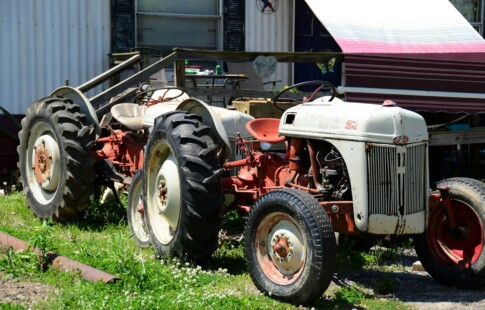
Crop Rotation Families 101: Everything You Need to Know to Plant Smarter
We are reader-supported. When you buy through links on our site, we may earn affiliate commission.
Crop rotation is a way for the agricultural sector to keep their lands nourished. It is the practice of planting new, seasonal crops that reintroduce nutrients into the soil, keeping it strong, pest-free, and capable of fostering the next season’s crop yields. Many farmers plant specific crops year-round and encourage that with chemicals, pesticides, or other environmentally damaging methods. However, crop rotation families are the models for keeping farms resilient and abundant.
What Are Crop Rotation Families?
The crop rotation families are groups of plants that are best planted in particular seasons. They are grouped by their ability to grow during environmental conditions and how they treat the soil as they grow. The main idea behind crop rotation is to plant different crops year after year because it can sap the earth of the same nutrients without putting anything back.
This does not mean you cannot plant strawberries two years in a row — you will want to grow them in a different farm or garden area. The suggested wait time between rotations is three to four years before returning the “original” crop to its spot. Though we will dive deeper into the crop rotation families, home farmers generally follow this rule:
- Leaf
- Fruit
- Root
- Legume
Many suggested schedules exist for aspiring or tenured farmers to see what has historically worked to keep soil happy and healthy. The practice is common in organic farming because it has numerous benefits other than maintaining healthy dirt. It minimizes the likelihood of invasive species, keeps weeds at bay, and encourages attentiveness to seasonally appropriate produce.
The names of crop rotation families differ depending on where you look, but the intention is similar. It also depends on whether you are operating a commercial farm or a personal garden. Some families are similar enough that you don’t need to know every single one — you need to know which ones are adjacent and disparate enough. Once you get over the fancy-sounding Latin, you will understand what and when to plant for ultimate soil fertility.
The Crop Rotation Families List
This is a list of each crop rotation family and what the family contains so you know what eligible crops should go in their spots in subsequent years. Some may be more geographically relevant or irrelevant if you only grow a family garden. Many of these families contain other flowers and weeds, but here, we will focus on crops.
Apiaceae or Umbelliferae
The family contains carrots, one of the world’s most beloved root vegetables. The names are interchangeable. You can rotate carrots with crops such as parsnips, fennel, celery, parsley, and cilantro. Though people associate carrots with potatoes because of their root origins, potatoes do not belong here.
Asteraceae
The asteraceae are also called the aster or sunflower family. Naturally, they include sunflowers and an eclectic yet strongly connected group of crops. If you plant a sunflower field for one year, consider any of the following, among others, in its place:
- Lettuce
- Tarragon
- Chamomile
- Endive
- Chicory
- Artichoke
Brassicaceae or Cruciferae
Brassicas are some of the most contentious vegetables, especially for young kids with a pickier palette. This family includes the infamous broccoli and one of the world’s favorite flavors — mustard. Yes, broccoli and other nitrogen-loving crops like kale, cauliflower, bok choi, kohlrabi, Brussels sprouts, and horseradish are part of the mustard family. They require high pH levels in their soil.
Chenopodiaceae
This is a more specific family of plants, and its central star is spinach. It also includes regular and sugar beets and chard.
Cucurbitaceae
The cucurbits sound like they contain cucumbers because they do. It has many fresh, watery summer flavors and comforting notes of autumn, including numerous squashes and melons. You’ll recognize zucchini, pumpkins, cantaloupes, watermelons, and other gourds.
Fabaceae
The fabaceae family contains legumes. Every bean and bean-adjacent crop, such as peanuts, soy, alfalfa, peas, lentils, and edamame, rests here. They add nitrogen to the soil when so many other categories remove it. They are known as soil-building crops.
Lamiaceae
Otherwise known as the mint family, it contains more than mint. Other delicious tea- and Italian food-associated herbs with lavender, basil, oregano, sage, mint, and catnip enter the scene.
Liliaceae
Also known as alliums, the family contains delightful flowers like daffodils and tulips but is more known for its less attractive crops — onions and garlic. Alongside these restaurant faves are shallots, leeks, and asparagus.
Poaceae
This family may be more relevant to commercial farmers, because it contains grasses. Unless your family garden is abnormally large, you may not be growing wheat, barley, corn, or oats, but that is poaceae. Other well-known crops are rye and rice. Cereals are usually soil-neutral, keeping the status of the land the same.
Knotweeds like buckwheat and rhubarb are in a different category, known as polygonacaeae.
Rosaceae
It is also called the rose family because it contains many flowers, shrubs, trees, and other greenery. However, it also includes countless crops, including pitted fruits and berries. You will find apples, pears, plums, raspberries, blackberries, rose hips, and many others in the rose family.
Blueberries and cranberries are in a different family, called the ericaceae or heather family.
Solanaceae
The potato family is finally here, but it includes an auspicious pairing — nightshades. The nightshade family includes tomatoes, eggplants, and tobacco. They love slightly acidic conditions and deplete the soil. This is not a bad thing — farmers must put soil conserving or building crops in their place in the following years.
Crop Rotation Families Help Farms Persist and Heal
Though none of the families necessarily crossover, some are more similar than others, and the soil is not harmed too much by introducing those families, such as brassicas and asters. You do not have to worry about memorizing all of these. Concern yourself with the plants that matter for your growing purpose, and after a few years, you will have a plan that works best for your personal tastes and the wellness of the planet.
Share on
Like what you read? Join other Environment.co readers!
Get the latest updates on our planet by subscribing to the Environment.co newsletter!
About the author
Steve Russell
Steve is the Managing Editor of Environment.co and regularly contributes articles related to wildlife, biodiversity, and recycling. His passions include wildlife photography and bird watching.





